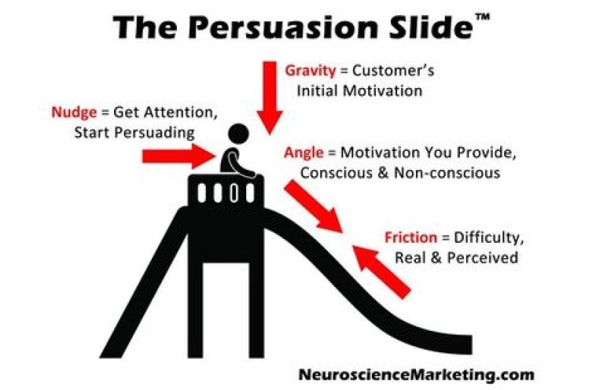How To Persuade Someone Into Doing Something

In a world saturated with information and competing demands, the ability to influence others is more crucial than ever. Whether navigating professional collaborations, advocating for a cause, or simply seeking agreement within personal relationships, understanding the science of persuasion offers a powerful toolkit. But how do you effectively guide someone towards your point of view without resorting to manipulation?
This article delves into the art and science of persuasion, offering evidence-based strategies for ethically influencing others. We'll explore key psychological principles, common pitfalls to avoid, and practical techniques for building consensus. By understanding these concepts, readers can learn to communicate their ideas more effectively and achieve their goals while maintaining trust and respect.
Understanding the Psychology of Persuasion
At its core, persuasion involves understanding the psychological factors that drive human behavior. Renowned psychologist Robert Cialdini identified six key principles of persuasion in his seminal work, "Influence: The Psychology of Persuasion": reciprocity, scarcity, authority, commitment and consistency, liking, and consensus (social proof).
Reciprocity suggests that people are more likely to comply with a request if they feel they owe something in return. Offering assistance or a small favor beforehand can significantly increase the likelihood of a positive response.
Scarcity plays on the fear of missing out. Highlighting the limited availability of a product, opportunity, or resource can create a sense of urgency and drive action.
Authority leverages the power of expertise. People tend to defer to individuals they perceive as knowledgeable or authoritative in a particular field. Credible sources, data, and certifications can bolster your perceived authority.
Commitment and Consistency refers to our desire to align our actions with our stated beliefs and past behaviors. Gaining small, initial commitments can pave the way for larger requests later on.
Liking is straightforward: we are more likely to be persuaded by people we like. Building rapport, finding common ground, and expressing genuine interest in the other person are essential for fostering liking.
Consensus (Social Proof) relies on the tendency to follow the crowd. Presenting evidence that others are already doing something can make it seem more desirable and acceptable. Testimonials, reviews, and statistics showcasing widespread adoption can be powerful tools.
Crafting a Persuasive Message
Beyond understanding these psychological principles, effective persuasion requires crafting a clear, compelling, and well-structured message. Begin by clearly identifying your objective and understanding your audience's needs, values, and perspectives.
Frame your argument in a way that resonates with their interests and addresses their concerns. Present your points logically, using evidence, examples, and stories to support your claims.
Consider the emotional appeal of your message. While logic is important, emotions often play a significant role in decision-making. A compelling narrative can be far more persuasive than dry facts and figures.
Avoiding Common Pitfalls
While the principles of persuasion can be powerful, it's important to avoid common pitfalls that can undermine your efforts. One common mistake is being overly aggressive or pushy. This can create resistance and damage trust.
Another mistake is failing to listen actively to the other person's concerns. Persuasion is a two-way street. Understanding their objections and addressing them thoughtfully is crucial for building consensus.
Using manipulative tactics or misleading information is unethical and ultimately counterproductive. Honesty and transparency are essential for building long-term relationships and maintaining credibility.
The Role of Active Listening and Empathy
Effective persuasion is not about imposing your will on others. It’s about understanding their perspective and finding common ground. Active listening is a critical skill.
Pay close attention to what the other person is saying, both verbally and nonverbally. Ask clarifying questions and summarize their points to ensure you understand their perspective. Empathetic listening is key here.
Demonstrating empathy – the ability to understand and share the feelings of another – builds rapport and fosters trust. When people feel understood, they are more open to considering your point of view.
Ethical Considerations
The power of persuasion comes with a responsibility to use it ethically. Avoid manipulating or coercing others, and always be transparent about your intentions. Respect the other person's autonomy and right to make their own decisions.
Persuasion should be about finding mutually beneficial solutions, not about exploiting vulnerabilities. When in doubt, err on the side of transparency and honesty.
Remember that building trust is a long-term investment. Ethical persuasion practices will strengthen relationships and enhance your reputation.
Conclusion: Persuasion as a Skill for Success
Mastering the art of persuasion is a valuable skill that can enhance your success in all areas of life. By understanding the psychological principles that drive human behavior, crafting compelling messages, and practicing ethical communication, you can effectively influence others and achieve your goals.
The key is to focus on building genuine relationships, understanding your audience's needs, and communicating your ideas with clarity, empathy, and integrity. The ability to persuade ethically and effectively will continue to be a critical asset in navigating the complexities of our interconnected world.










+something%2C+or+to+buy+an+item+or+service.jpg)







